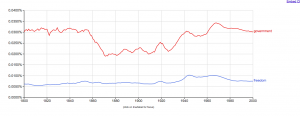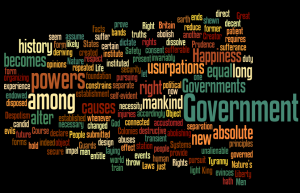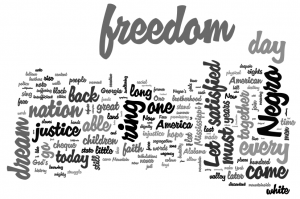Distant reading is a tool made possible through the use of digital outlets that not only allows a reader to view a text in a different light, but also distinguishes the way the text is interpreted. Although distant reading has a plethora of positive attributes, it also has its fair share of down falls and flaws as well. For starters distant reading reduces the amount of time spent when looking at a text because it can highlight and paraphrase the most important parts. In other words, it basically does the skim reading for the reader, in some cases bolding and illuminating the most important words in vibrant colors and fonts, which helps to decipher important themes and aspects of a text. Distant reading also has the competency to allow the reader it wouldn’t see by just reading the text plainly. For example, Ngrams allow the reader to see how often a word was used through out time, which can be explained through historical events. And even though this just skims the surface of everything distant reading has to offer and all of its benefit it entails, it also has a few negative components as well. For example, if a reader is just looking at words out of context on a wordle, it may become hard to interpret and difficult to make assumptions. One of the most difficult obstacles encountered when employing distant reading, is actually using the tools to create one’s own perspective by making assumptions and inferences. Much of the time, distant reading tools are better used as a supplement to reading the text, rather than completely substituting the text. Furthermore, it is evident that distant reading tools have clear positive and negative attributes that can be seen when actually putting these tools to work
.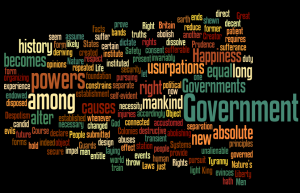
One example of a distant reading tool is a wordle. Above is an example made of a wordle depicting the most significant words used in the declaration of independence. The bigger words clearly indicate more significance than the smaller one, but all of the words are still important. Just by looking at this it would allow any reader to be able to infer that some of the main notions that Declaration of Independence grapples with is the government, powers, mankind, new, happiness, etc. All of these words come together to relay the main idea of the Declaration of Independence, without actually having to read the entire text. Although, one is able to extract some of the main points, it is obviously impossible to also get all of the trivial details and stipulations the document entails just by looking at the wordle. Moreover, the wordle is useful in paraphrasing the document, but not representing the entire text clearly.
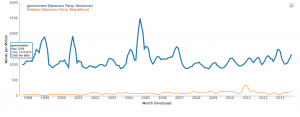
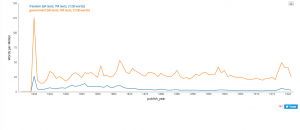
Some other distant reading tools are ngrams and cultronomics, which are somewhat similar and shown above. In the two examples I used, I took the words freedom and government which were both highlighted in the wordles of the Declaration of Independence and Martin Luther King’s speech to see how frequently they were used and in different contexts. In both, it is apparent that government is used much more and their frequencies fluctuate throughout time. This can explain a lot about history and what was going on in a specific time period which would trigger the increase and decrease of the use of words.
Digital tools are being used more and more often as people are seeing all the benefits. Because of digital tools a reader is able to form a new perspective and see a text in a different light, or see another important part of a text highlighted. Although an important thing to note is that often times these tools must be edited, as hoover discusses. Many times in the wordles for example, one must take out words that are used a lot but don’t carry much meaning, for example a word like “the.” Another important thing to note about digital tools is that Houston discusses is that people are always analyzing a text, whether it is being done consciously or unconsciously. So have the proper tools to shape and mold one’s perspective and the way that they analyze a text is absolutely crucial. Clearly distant reading tools are tedious, but nonetheless very useful in analyzing all kinds of texts.
